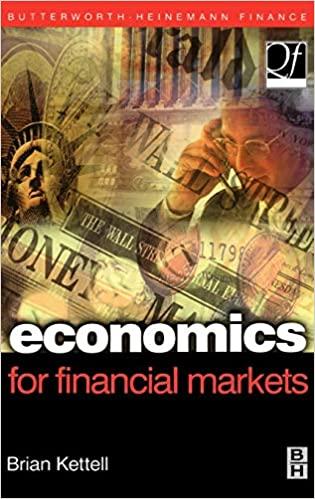Question
Question # 1: A stock with a beta equal to 1 has zero systematic (or market) risk. a. True b. False Please provide an explanation.
Question # 1:
A stock with a beta equal to 1 has zero systematic (or market) risk.
|
| a. | True |
|
| b. | False |
Please provide an explanation.
Question # 2:
Bad managerial judgments or unforeseen negative events that happen to a firm are defined as "company-specific," or "unsystematic," events, and their effects on investment risk can in theory be diversified away.
|
| a. | True |
|
| b. | False |
Please provide an explanation.
Question # 3:
Which of the following is NOT a potential problem when estimating and using betas, i.e., which statement is FALSE? Please provide an explanation.
|
| a. | The fact that a security or project may not have a past history that can be used as the basis for calculating beta. |
|
| b. | Sometimes, during a period when the company is undergoing a change such as toward more leverage or riskier assets, the calculated beta will be drastically different from the "true" or "expected future" beta. |
|
| c. | The beta of an "average stock," or "the market," can change over time, sometimes drastically. |
|
| d. | Sometimes the past data used to calculate beta do not reflect the likely risk of the firm for the future because conditions have changed. |
|
| e. | The beta coefficient of a stock is normally found by regressing past returns on a stock against past market returns. This calculated historical beta may differ from the beta that exists in the future. |
Question # 4:
Dothan Inc.'s stock has a 25% chance of producing a 30% return, a 50% chance of producing a 12% return, and a 25% chance of producing a 18% return. What is the firm's expected rate of return? Show your work.
Question # 5:
Stock A has a beta of 1.2 and a standard deviation of 25%. Stock B has a beta of 1.4 and a standard deviation of 20%. Portfolio AB was created by investing in a combination of Stocks A and B. Portfolio AB has a beta of 1.25 and a standard deviation of 18%. Which of the following statements is CORRECT? Please provide an explanation.
|
| a. | Stock A has more market risk than Portfolio AB. |
|
| b. | Stock A has more market risk than Stock B but less stand-alone risk. |
|
| c. | Portfolio AB has more money invested in Stock A than in Stock B. |
|
| d. | Portfolio AB has the same amount of money invested in each of the two stocks. |
|
| e. | Portfolio AB has more money invested in Stock B than in Stock A. |
Question # 6:
If a companys beta were to double, would its expected return double? Please explain.
Question # 7:
If you added more stocks at random to a portfolio, which of the following is the most accurate statement of what would happen to the standard deviation of the portfolio? Please explain.
(1) standard deviation of the portfolio would remain constant.
(2) standard deviation of the portfolio would decline to somewhere in the vicinity of 20%.
(3) standard deviation of the portfolio would decline to zero if enough stocks were included.
Question # 8:
Cooley Company's stock has a beta of 1.40, the risk-free rate is 4.25%, and the market risk premium is 5.50%. What is the firm's required rate of return? Show your work.
Question # 9:
Assume that you are the portfolio manager of the SF Fund, a $3 million hedge fund that contains the following stocks. The required rate of return on the market is 11.00% and the risk-free rate is 5.00%. What rate of return should investors expect (and require) on this fund? (Hint: first calculate the weights, then calculate the beta of the portfolio and then calculate the required return of the portfolio.) Show your work.
| Stock | Amount | Weights | Beta |
| A | $1,075,000 | ? | 1.20 |
| B | 675,000 | ? | 0.50 |
| C | 750,000 | ? | 1.40 |
| D | 500,000 | ? | 0.75 |
|
| $3,000,000 |
|
|
Step by Step Solution
There are 3 Steps involved in it
Step: 1

Get Instant Access to Expert-Tailored Solutions
See step-by-step solutions with expert insights and AI powered tools for academic success
Step: 2

Step: 3

Ace Your Homework with AI
Get the answers you need in no time with our AI-driven, step-by-step assistance
Get Started


